A V-n diagram is a graphical representation plotting airspeed against load factor, illustrating an aircraft’s performance limits. It is a critical tool for pilots and engineers to visualize safe operating conditions and potential risks during flight maneuvers, ensuring adherence to structural and aerodynamic constraints.
Definition and Purpose
A V-n diagram, or velocity-load factor diagram, is a graphical representation plotting airspeed (V) against load factor (n). It defines the maximum load factors an aircraft can safely withstand at various speeds, ensuring structural integrity and safe flight operations. The diagram is created during the design process, typically in the conceptual or preliminary stages. Its purpose is to provide a visual tool for pilots and engineers to understand the aircraft’s performance limits, including stall speeds, gust loads, and maneuvering capabilities. Each aircraft has a unique V-n diagram, tailored to its specific design characteristics and operational requirements, ensuring compliance with airworthiness standards and safe flight envelope boundaries.
Importance in Aircraft Design and Operations
The V-n diagram is crucial in aircraft design and operations as it ensures safety by defining operational limits. It helps engineers design structures to withstand various loads, preventing potential failures. Pilots use the diagram to avoid exceeding safe load factors during maneuvers, reducing accident risks. By visualizing the aircraft’s performance boundaries, it aids in optimizing flight envelopes and adhering to airworthiness standards. Additionally, it guides the development of flight manuals, ensuring pilots operate within safe parameters. This tool is essential for balancing performance, safety, and structural integrity, making it a cornerstone in both aircraft design and operational training, ultimately protecting both the aircraft and its occupants from exceeding allowable stresses.
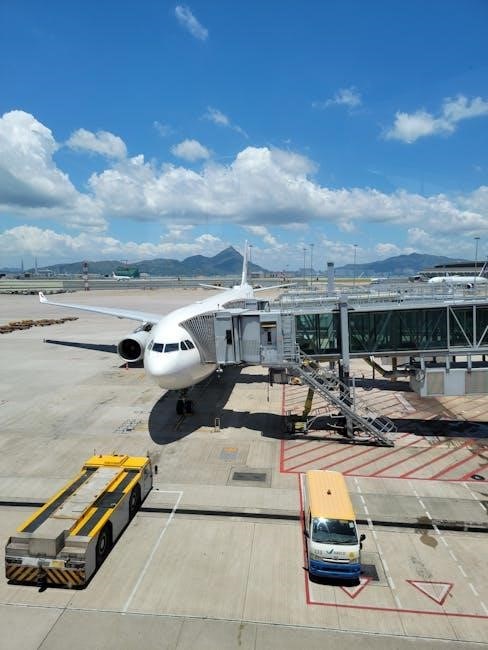
Key Concepts of V-n Diagrams
A V-n diagram plots airspeed (V) against load factor (n), defining an aircraft’s structural limits and flight envelope. It combines stall curves and gust lines to illustrate safe operating ranges, ensuring pilots and engineers understand performance boundaries and safety margins.
Velocity (V) vs. Load Factor (n)
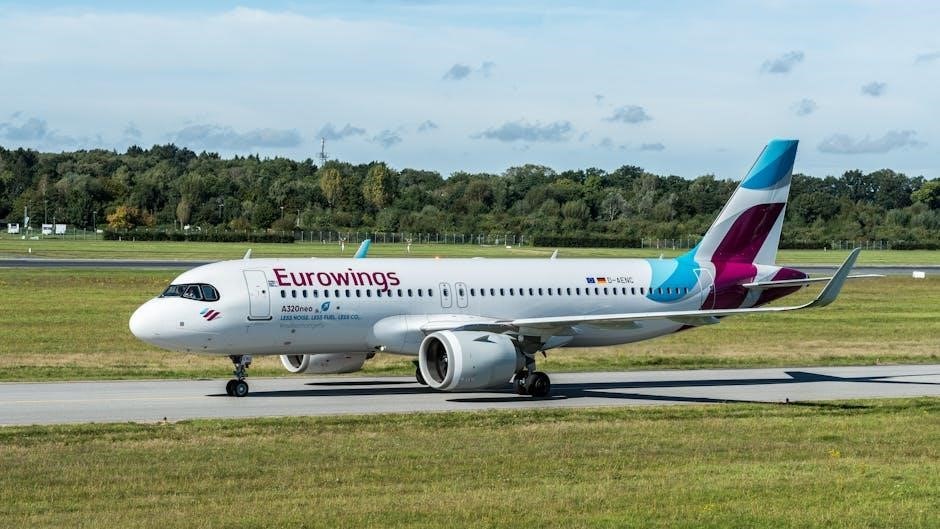
The V-n diagram illustrates the relationship between airspeed (V) and load factor (n), which represents the forces acting on an aircraft during maneuvers. Load factor (n) is the ratio of the aerodynamic forces to the aircraft’s weight. At lower speeds, higher load factors can cause stalls, while at higher speeds, structural limits are a concern. The diagram combines stall curves and gust lines to show safe operating ranges, helping pilots avoid structural damage and maintain flight safety. This relationship is crucial for understanding an aircraft’s performance envelope and ensuring safe flight operations across various conditions. It visually defines the aircraft’s limitations, aiding in maneuver planning and risk assessment.
Stall Speed and Load Factor Relationship
The stall speed (Vs) is the minimum speed at which an aircraft can generate sufficient lift to sustain level flight at a load factor of 1g. As load factor increases, the stall speed decreases, indicating higher maneuvering capabilities but with increased risk of stall. The V-n diagram shows this relationship, with stall speed forming a parabolic curve. At higher load factors, the aircraft can stall at higher speeds, highlighting the need to balance maneuverability with safety. This relationship is critical for understanding an aircraft’s aerodynamic and structural limits, ensuring safe operation within its performance envelope. It visually connects speed and load factor limitations, aiding pilots in avoiding stall conditions during various flight maneuvers.

Structural Limits and Flight Envelope
The V-n diagram defines the structural limits and flight envelope of an aircraft, illustrating the maximum speed and load factor combinations it can safely withstand. The diagram is bounded by the stall speed curve, the maximum load factor lines, and the terminal speed limit. The flight envelope ensures that the aircraft operates within its structural design limits, preventing excessive stress on the airframe. By adhering to these boundaries, pilots can avoid structural damage and maintain safe flight operations. The flight envelope is crucial for both subsonic and supersonic aircraft, as it provides clear visual guidelines for permissible speed and load factor combinations during various flight conditions and configurations.

Factors Affecting the V-n Diagram
The V-n diagram is influenced by several key factors, including Maximum Gross Takeoff Weight (MGTOW), altitude, aircraft configuration, and symmetry of loading, which affect the aircraft’s performance limits and structural integrity during flight operations.
Maximum Gross Takeoff Weight (MGTOW)
The Maximum Gross Takeoff Weight (MGTOW) significantly influences the V-n diagram by defining the aircraft’s structural and aerodynamic limits. As MGTOW increases, the allowable load factors at a given speed may decrease due to higher inertia and stress on the airframe. This relationship is critical for determining the safe operating envelope, as exceeding the weight limits can compromise the aircraft’s ability to withstand maneuvers or gust loads. Engineers use MGTOW to calculate the intersection of stall speeds and load factors, ensuring the aircraft remains within its design constraints. This factor is integral to plotting the V-n diagram accurately and guarantees compliance with safety standards during flight operations.
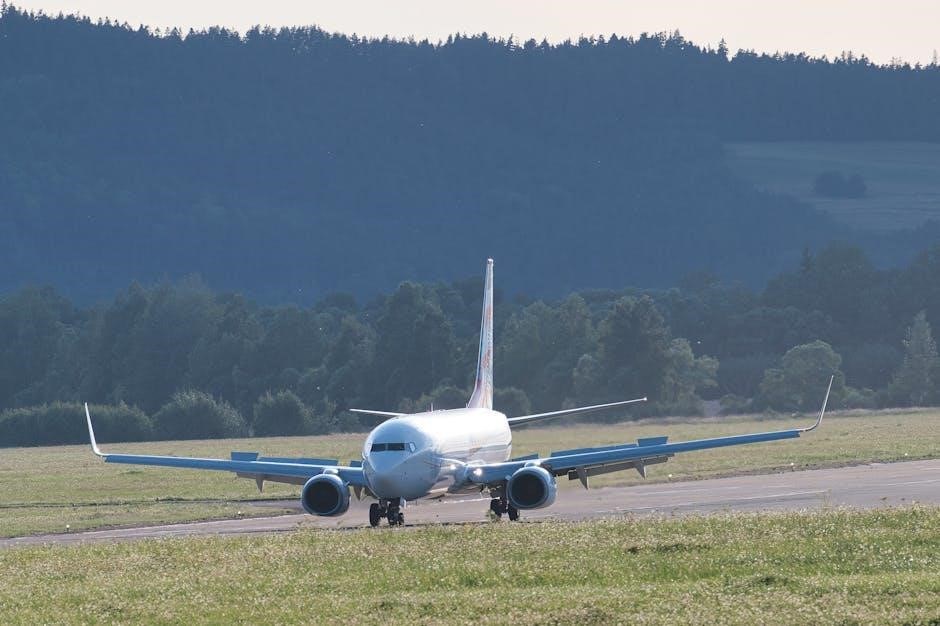
Altitude Impact on Performance
Altitude significantly affects the V-n diagram by altering an aircraft’s performance and load-carrying capacity. At higher altitudes, air density decreases, reducing lift and thrust, which can lower the stall speed and affect the maximum load factors. Additionally, altitude influences the gust velocities the aircraft may encounter, further shaping the V-n envelope. Engineers must account for these changes to ensure the aircraft operates within safe limits at various altitudes. This consideration is vital for constructing accurate altitude-specific V-n diagrams, as failure to adjust for altitude can lead to incorrect load factor calculations and compromise flight safety. Thus, altitude plays a crucial role in determining the aircraft’s operational boundaries.
Aircraft Configuration (Clean, Cruise, Landing)
The aircraft’s configuration significantly impacts its V-n diagram, as different setups alter aerodynamic characteristics and structural loads. A clean configuration, without external stores or landing gear, typically allows for higher speeds and load factors. In cruise configuration, drag increases slightly, affecting performance. Landing configuration introduces drag and reduces stall speed, narrowing the operational envelope. Each configuration must be analyzed separately to ensure safety across all flight regimes. These variations highlight the importance of tailored V-n diagrams for each configuration, ensuring pilots operate within prescribed limits and avoid structural overloads. This adaptive approach is essential for maintaining safety and performance across diverse mission requirements.
Symmetry of Loading and Gust Factors
Symmetry of loading refers to the balanced distribution of forces on an aircraft, while gust factors account for sudden wind changes. Asymmetric loading can lead to unpredictable behavior, potentially exceeding structural limits. Gust factors introduce additional stress, particularly at higher altitudes. The V-n diagram incorporates these factors to define safe operating boundaries. Gust velocities are specified by airworthiness standards, varying with altitude and aircraft type. Engineers must consider both symmetric and asymmetric load scenarios to ensure the aircraft’s structural integrity. These considerations are crucial for constructing accurate V-n diagrams, providing pilots with clear guidelines to avoid dangerous load conditions and maintain safe flight operations. Proper accounting for these factors ensures reliability and safety in various environmental conditions.
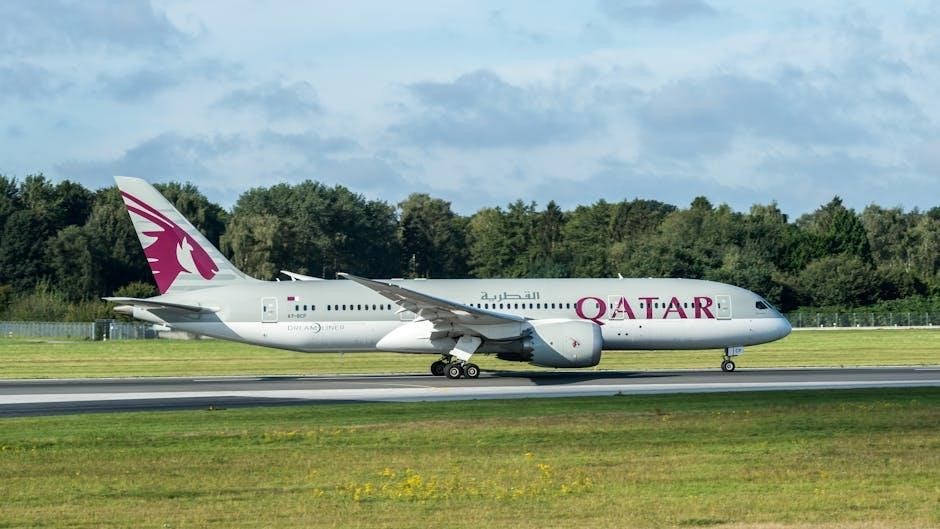
Construction of the V-n Diagram
The V-n diagram is constructed by plotting airspeed against load factor, calculating stall speed, determining load factors, and incorporating gust velocities and structural limits.
Steps to Plot the Diagram
To construct a V-n diagram, begin by determining the stall speed (Vs) at 1g, which serves as the lower boundary. Next, calculate the maximum positive and negative load factors based on the aircraft’s structural limits. Incorporate gust velocities, which define the upper speed limits. Plot these values on a graph with airspeed (V) on the x-axis and load factor (n) on the y-axis. The intersection of these factors forms the flight envelope, illustrating safe operating conditions; This process ensures the diagram accurately reflects the aircraft’s performance and structural constraints for various flight scenarios.
Calculating Stall Speed (Vs) and Load Factors
Stall speed (Vs) is calculated using the aircraft’s weight, wing area, and airfoil characteristics. The formula involves the square root of the wing loading divided by the air density. Load factors are derived from structural limits, with maximum positive and negative values determined by the aircraft’s design. These factors are plotted against corresponding airspeeds, ensuring the V-n diagram accurately represents the aircraft’s performance envelope. This calculation is crucial for defining safe operating limits and preventing structural overloading during flight maneuvers.
Incorporating Gust Velocities and Structural Limits
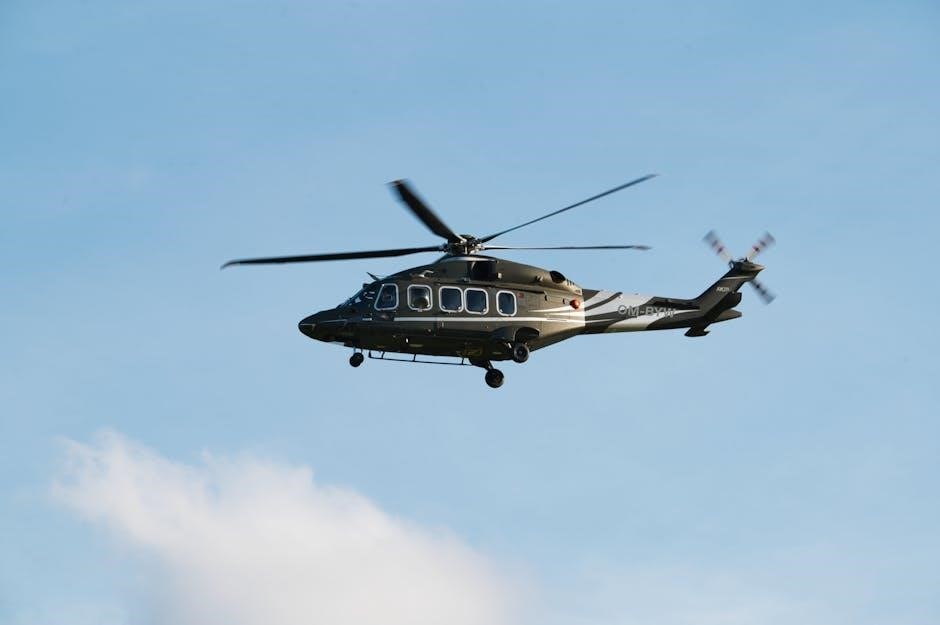
Gust velocities are integrated into the V-n diagram to account for sudden airspeed changes that can impose additional structural stress. Airworthiness standards specify required gust intensities based on aircraft type and altitude, influencing the diagram’s upper limits. Structural limits, defined by the aircraft’s maximum allowable load factors, are plotted against corresponding airspeeds to ensure safe operations. Engineers use simulations and analyses to determine these limits, updating the diagram for different aircraft configurations. Altitude affects air density and turbulence susceptibility, necessitating altitude-specific adjustments. This process ensures the V-n diagram accurately reflects both aerodynamic and structural constraints, crucial for maintaining aircraft safety and performance.
Applications in Aircraft Design
V-n diagrams are essential for determining flight performance limits, ensuring compliance with airworthiness standards, and analyzing real-world scenarios, such as comparing subsonic and supersonic aircraft capabilities.
Determining Flight Performance Limits
The V-n diagram is crucial for establishing an aircraft’s operational boundaries, ensuring it operates within safe structural and aerodynamic limits. By plotting airspeed against load factor, the diagram identifies the maximum and minimum speeds for various maneuvers, preventing structural overload. It also defines the stall speed at different load factors and the maximum g-forces the aircraft can withstand. This data is vital for designing flight envelopes, ensuring compliance with airworthiness standards, and providing pilots with clear guidelines for safe operations. The diagram’s accuracy is essential for preventing damage and ensuring optimal performance across different configurations and flight conditions.
Ensuring Compliance with Airworthiness Standards
The V-n diagram plays a pivotal role in ensuring an aircraft meets airworthiness standards by defining its structural and aerodynamic limits. Regulatory bodies specify requirements for load factors, stall speeds, and gust velocities, which are directly incorporated into the diagram. This ensures the aircraft can withstand various flight conditions without compromising safety. Compliance is verified through rigorous testing and analysis, with the V-n diagram serving as a reference for certification. Adherence to these standards guarantees that the aircraft operates safely within its design envelope, protecting both the aircraft and its occupants from potential hazards during all phases of flight.
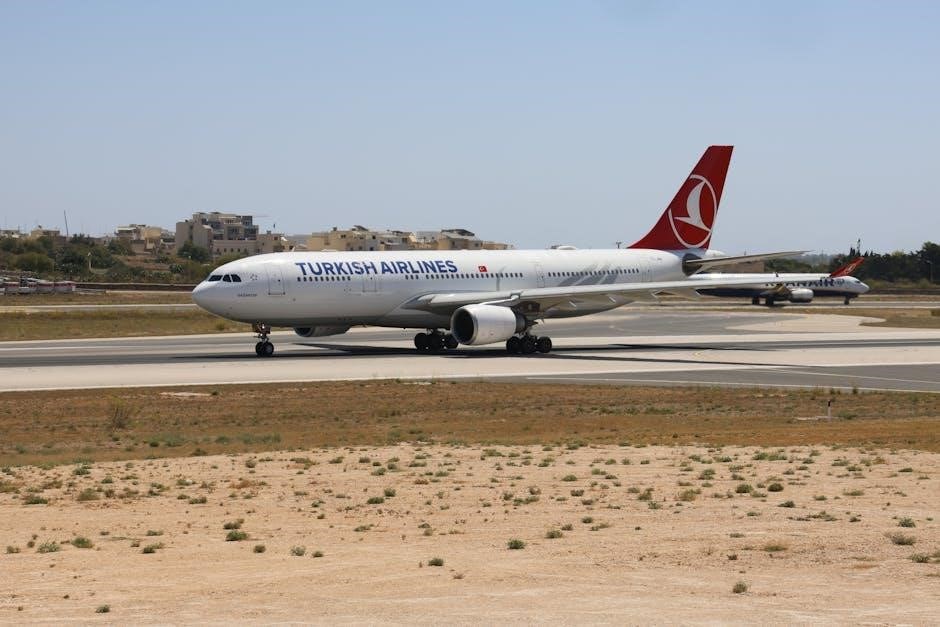
Real-World Examples (Subsonic vs. Supersonic Aircraft)
The V-n diagram differs significantly between subsonic and supersonic aircraft due to varying flight regimes. Subsonic aircraft, like the T-34, exhibit a parabolic stall curve with a clear distinction between positive and negative load factors. In contrast, supersonic aircraft, such as the F-104, display a more linear relationship due to compressibility effects. These differences are crucial for pilots to understand, as they impact maneuverability and structural limits. The diagrams for these aircraft types highlight how design and operational requirements influence their flight envelopes, ensuring safe operation across diverse speed ranges. This comparison underscores the importance of tailoring V-n diagrams to specific aircraft performance characteristics.
Limitations and Considerations
V-n diagrams are complex for multi-configuration aircraft, requiring altitude-specific charts. This adds challenges, necessitating recalculation by structural engineers to ensure safety and accuracy in varying flight conditions.
Complexity in Multi-Configuration Aircraft
Multi-configuration aircraft present unique challenges in V-n diagram construction, as different configurations significantly alter structural limits and performance characteristics. Each configuration, such as clean, cruise, or landing setups, requires distinct V-n diagrams to account for variations in weight distribution, control surfaces, and aerodynamic properties. This multiplicity complicates the design process, as engineers must plot and manage multiple envelopes for a single aircraft. The need to ensure accuracy across all configurations increases the workload and potential for errors. This complexity underscores the importance of meticulous planning and precise calculations to maintain safety and performance standards in diverse operational scenarios.
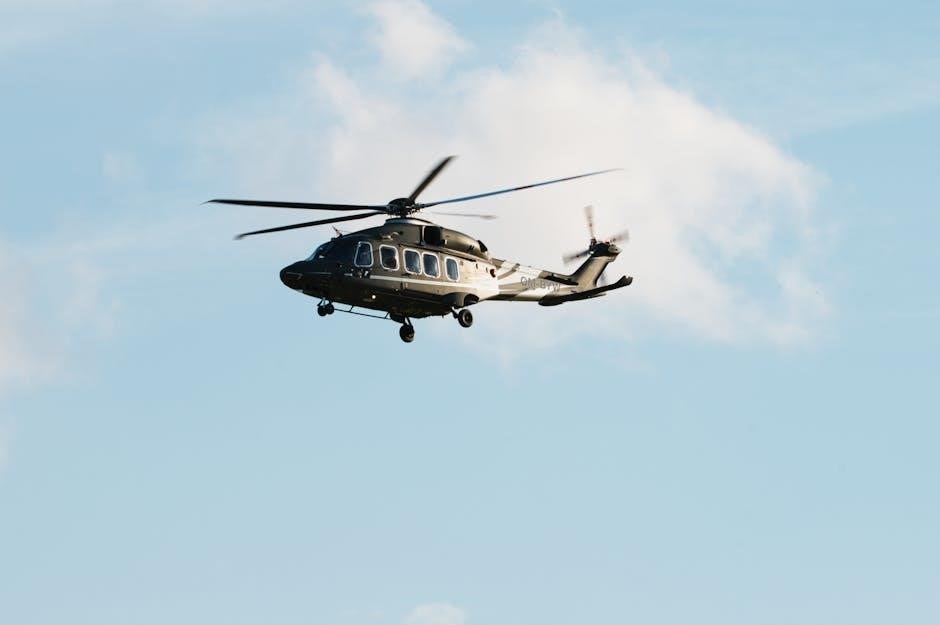
Altitude-Specific Diagrams and Their Challenges
Altitude significantly impacts aircraft performance, necessitating altitude-specific V-n diagrams to ensure safe operations. At higher altitudes, air density decreases, reducing stall speeds and altering load factor limits. This variation requires engineers to generate multiple diagrams for different altitudes, increasing complexity and workload. Additionally, atmospheric conditions like temperature and humidity further complicate the process. The need for precise recalculations at each altitude introduces potential for errors. This challenge highlights the importance of robust design methodologies and computational tools to accurately adapt V-n diagrams for varying altitudes, ensuring adherence to safety and performance standards across all flight regimes.
Need for Recalculation by Structural Engineers
The V-n diagram requires meticulous recalculations by structural engineers to ensure accuracy and safety. Factors like weight, altitude, and configuration can significantly alter an aircraft’s performance envelope. Engineers must verify stall speeds, load factors, and gust velocities for each specific condition. This process involves complex stress analyses and adherence to airworthiness standards. Recalculations are particularly crucial for aircraft operating in diverse environments or undergoing design modifications. Any oversight can lead to unsafe conditions, making the role of structural engineers pivotal in maintaining the integrity of the V-n diagram and ensuring compliance with regulatory requirements. Their expertise guarantees the aircraft operates within its structural limits.
The V-n diagram is a critical tool in aviation, ensuring safety by defining an aircraft’s operational limits. Its continuous evolution with technology enhances flight performance and safety standards.
A V-n diagram is a critical tool in aviation, defining an aircraft’s operational limits by plotting airspeed against load factor. It ensures safety by illustrating maximum load factors at various speeds, helping pilots avoid structural damage. The diagram is influenced by factors like maximum gross takeoff weight, altitude, aircraft configuration, and gust velocities. It is developed during early design stages and is essential for compliance with airworthiness standards. Real-world examples, such as subsonic and supersonic aircraft, demonstrate its practical applications. Structural engineers must recalculate V-n diagrams for safety, highlighting its importance in both design and operational contexts to ensure optimal flight performance and safety standards.
Future Developments in V-n Diagrams
Future advancements in V-n diagrams will focus on integrating real-time data and machine learning to enhance accuracy and adaptability. Dynamic updates based on flight conditions and aircraft configurations will improve safety and performance monitoring. The development of digital tools, such as apps for plotting V-n diagrams, will simplify analysis and accessibility. These tools will incorporate gust velocities and structural limits, enabling pilots and engineers to make informed decisions. Additionally, advancements in airworthiness standards will ensure compliance with evolving aviation requirements. The integration of V-n diagrams into flight management systems will further streamline operations, making them indispensable for modern aircraft design and operation.
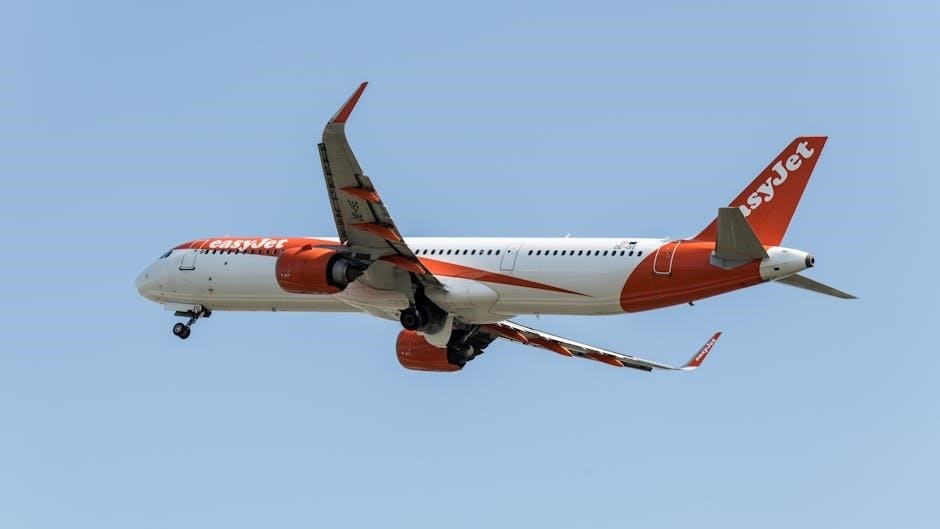
Leave a Reply